Abstract
We investigated the effect of a commercial iterative reconstruction technique (iDose, Philips) on the image quality and the dose calculation for the treatment plan. Using the electron density phantom, the 3D CT images with five different protocols (50, 100, 200, 350 and 400 mAs) were obtained. Additionally, the acquired data was reconstructed using the iDose with level 5. A lung phantom was used to acquire the 4D CT with the default protocol as a reference and the low dose (one third of the default protocol) 4D CT using the iDose for the spine and lung plans. When applying the iDose at the same mAs, the mean HU value was changed up to 85 HU. Although the 1 SD was increased with reducing the CT dose, it was decreased up to 4 HU due to the use of iDose. When using the low dose 4D CT with iDose, the dose change relative to the reference was less than 0.5% for the target and OARs in the spine plan. It was also less than 1.1% in the lung plan. Therefore, our results suggests that this dose reduction technique is applicable to the 4D CT image acquisition for the radiation treatment planning.
Go to : 
REFERENCES
1. Balter JM, Ten Haken RK, Lawrence TS, Lam KL, Robertson JM. Uncertainties in CT-based radiation therapy treatment planning associated with patient breathing. Int J Radiat Oncol Biol Phys. 1996; 36:167–174.

2. Keall PJ, Starkschall G, Shukla H, Forster KM, Ortiz V, Stevens CW, et al. Acquiring 4D thoracic CT scans using a multislice helical method. Phys Med Biol. 2004; 49:2053–2067.

3. Ohara K, Okumura T, Akisada M, Inada T, Mori T, Yokota H, et al. Irradiation synchronized with respiration gate. Int J Radiat Oncol Biol Phys. 1989; 17:853–857.

4. Hubbard P, Callahan J, Cramb J, Budd R, Kron T. Audit of radiation dose delivered in time-resolved four-dimensional computed tomography in a radiotherapy department. J Med Imaging Radiat Oncol. 2015; 59:346–352.

5. Low DA, Nystrom M, Kalinin E, Parikh P, Dempsey JF, Bradley JD, et al. A method for the reconstruction of four-dimensional synchronized CT scans acquired during free breathing. Med Phys. 2003; 30:1254–1263.

6. Matsuzaki Y, Fujii K, Kumagai M, Tsuruoka I, Mori S. Effective and organ doses using helical 4DCT for thoracic and abdominal therapies. J Radiat Res. 2013; 54:962–970.

7. Mori S, Ko S, Ishii T, Nishizawa K. Effective doses in four-dimensional computed tomography for lung radiotherapy planning. Med Dosim. 2009; 34:87–90.

8. Hara AK, Paden RG, Silva AC, Kujak JL, Lawder HJ, Pavlicek W. Iterative reconstruction technique for reducing body radiation dose at CT: feasibility study. AJR Am J Roentgenol. 2009; 193:764–771.

9. Kim Y, Kim YK, Lee BE, Lee SJ, Ryu YJ, Lee JH, et al. Ultralow-dose CT of the thorax using iterative reconstruction: evaluation of image quality and radiation dose reduction. American Journal of Roentgenology. 2015; 204:1197–1202.

10. Raman SP, Johnson PT, Deshmukh S, Mahesh M, Grant KL, Fishman EK. CT dose reduction applications: available tools on the latest generation of CT scanners. Journal of the American College of Radiology. 2013; 10:37–41.

11. Arapakis I, Efstathopoulos E, Tsitsia V, Kordolaimi S, Economopoulos N, Argentos S, et al. Using “iDose4” iterative reconstruction algorithm in adults' chest–abdomen–pelvis CT examinations: effect on image quality in relation to patient radiation exposure. The British journal of radiology. 2014; 87:20130613.

12. Mehta D, Thompson R, Morton T, Dhanantwari A, Shefer E. Iterative model reconstruction: simultaneously lowered computed tomography radiation dose and improved image quality. Med Phys Int J. 2013; 2:147–155.
Go to : 
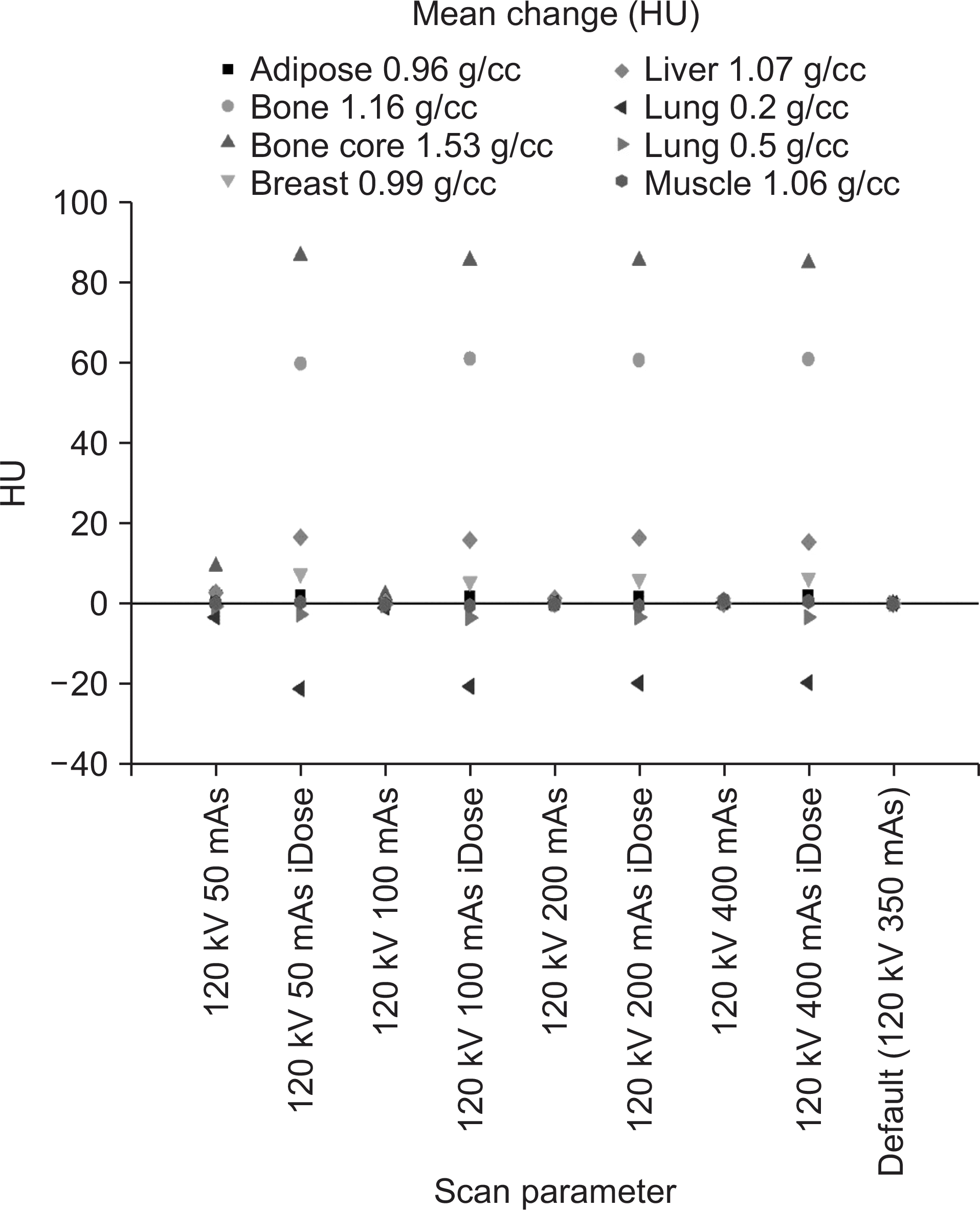 | Fig. 1.Mean change in HU depending on the CT scan parameter for different density materials relative to the default scan parameter. |
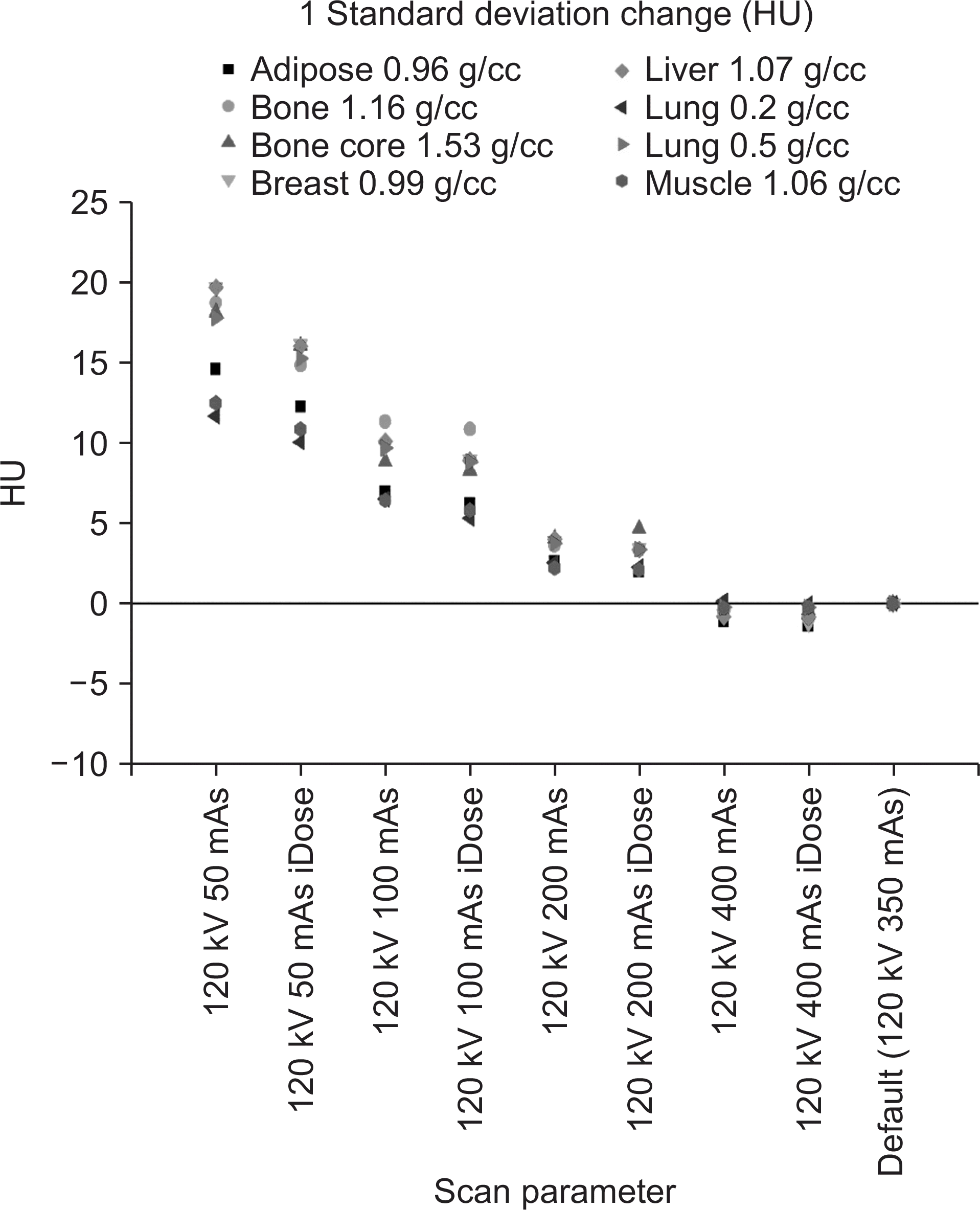 | Fig. 2.1 Standard deviation change in HU depending on the CT scan parameter for different density materials relative to the default scan parameter. |
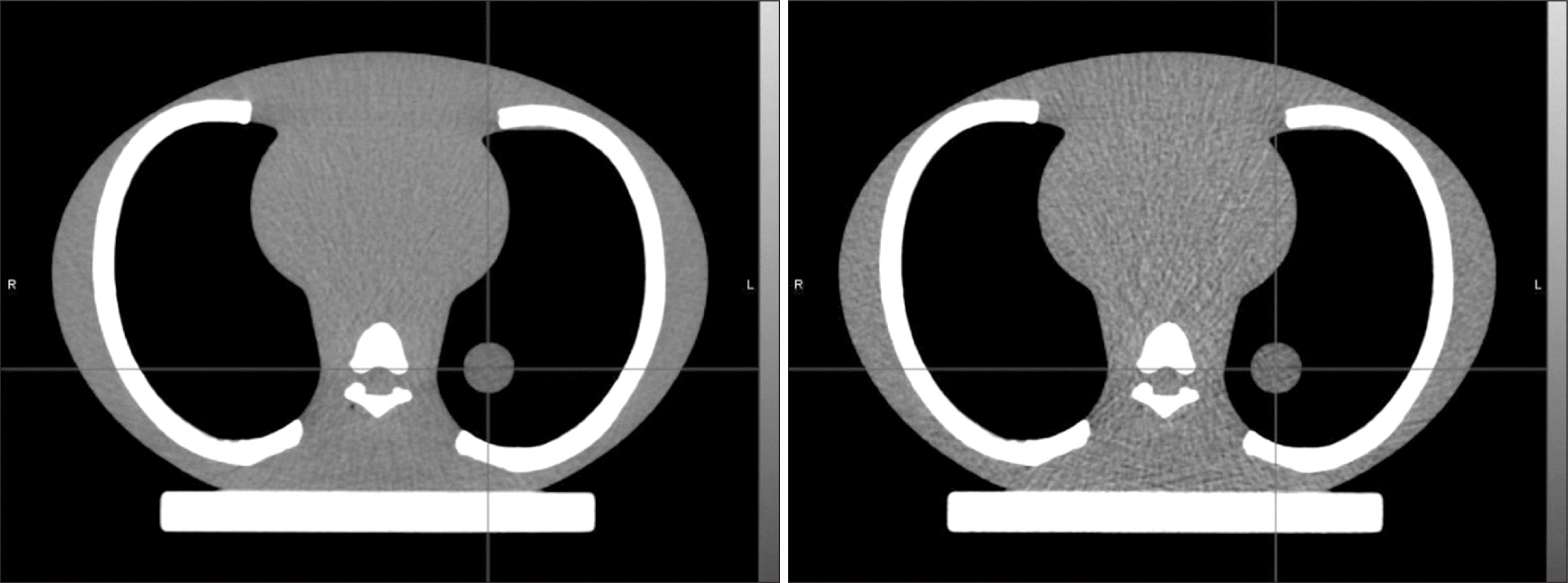 | Fig. 3.4D CT images of the lung phantom acquired using the default scan parameter (600 mAs) without iDose (left) and the low dose scan parameter (200 mAs) with iDose (right). |
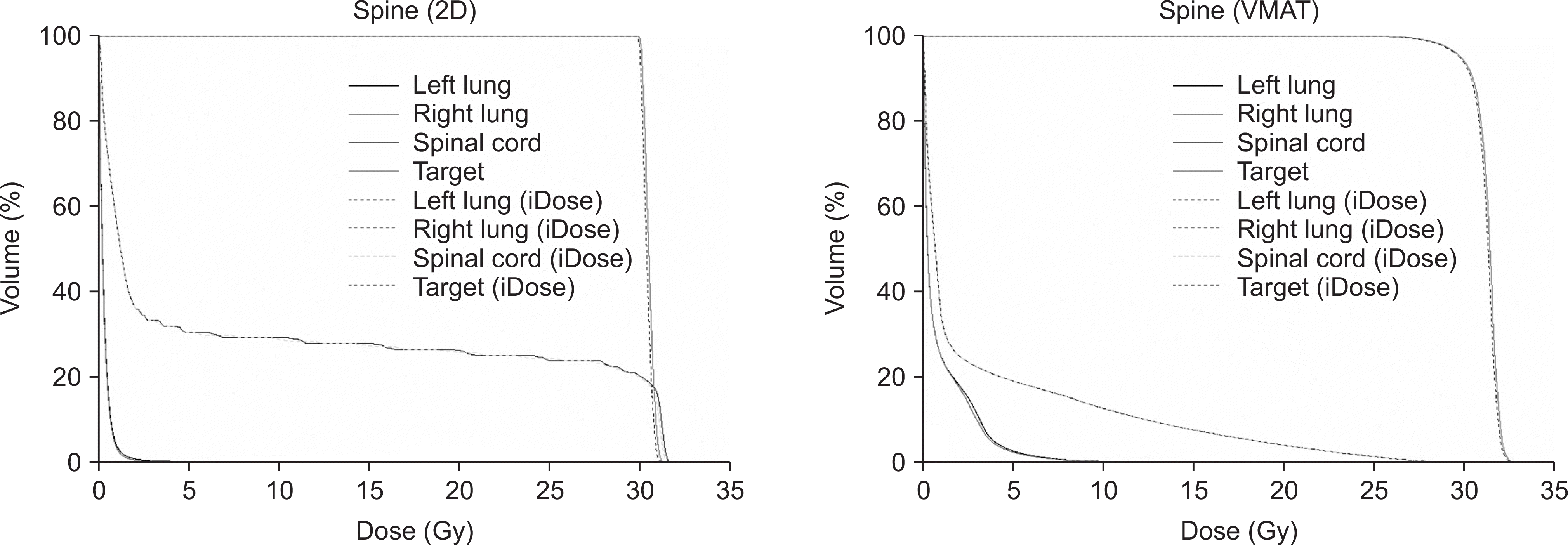 | Fig. 4.DVH comparison between the dose calculations on the CT images reconstructed with and without using iDose for the Spine 2D parallel-opposite (AP-PA) and VMAT plan. |
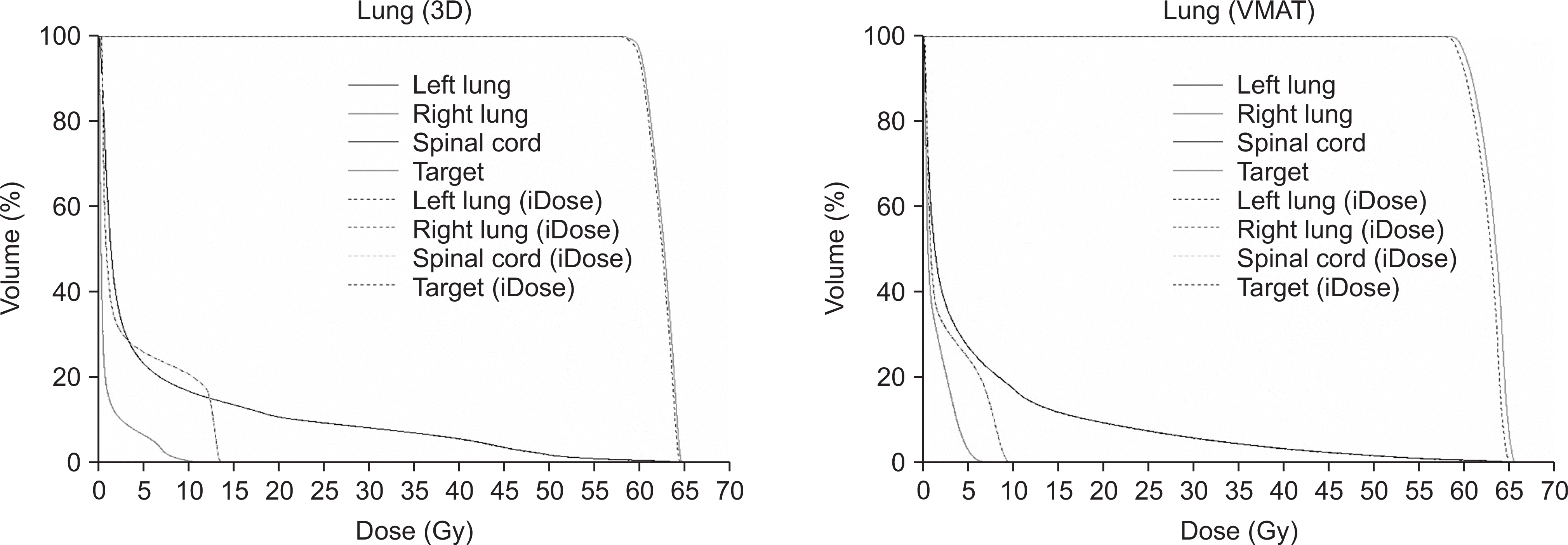 | Fig. 5.DVH comparison between the dose calculations on the CT images reconstructed with and without using iDose for the Lung 3D conformal and VMAT plan. |
Table 1.
Dose-volumetric parameters of target (PTV) and normal tissues (left and right lung, spinal cord) for spine and lung plan.




 PDF
PDF ePub
ePub Citation
Citation Print
Print


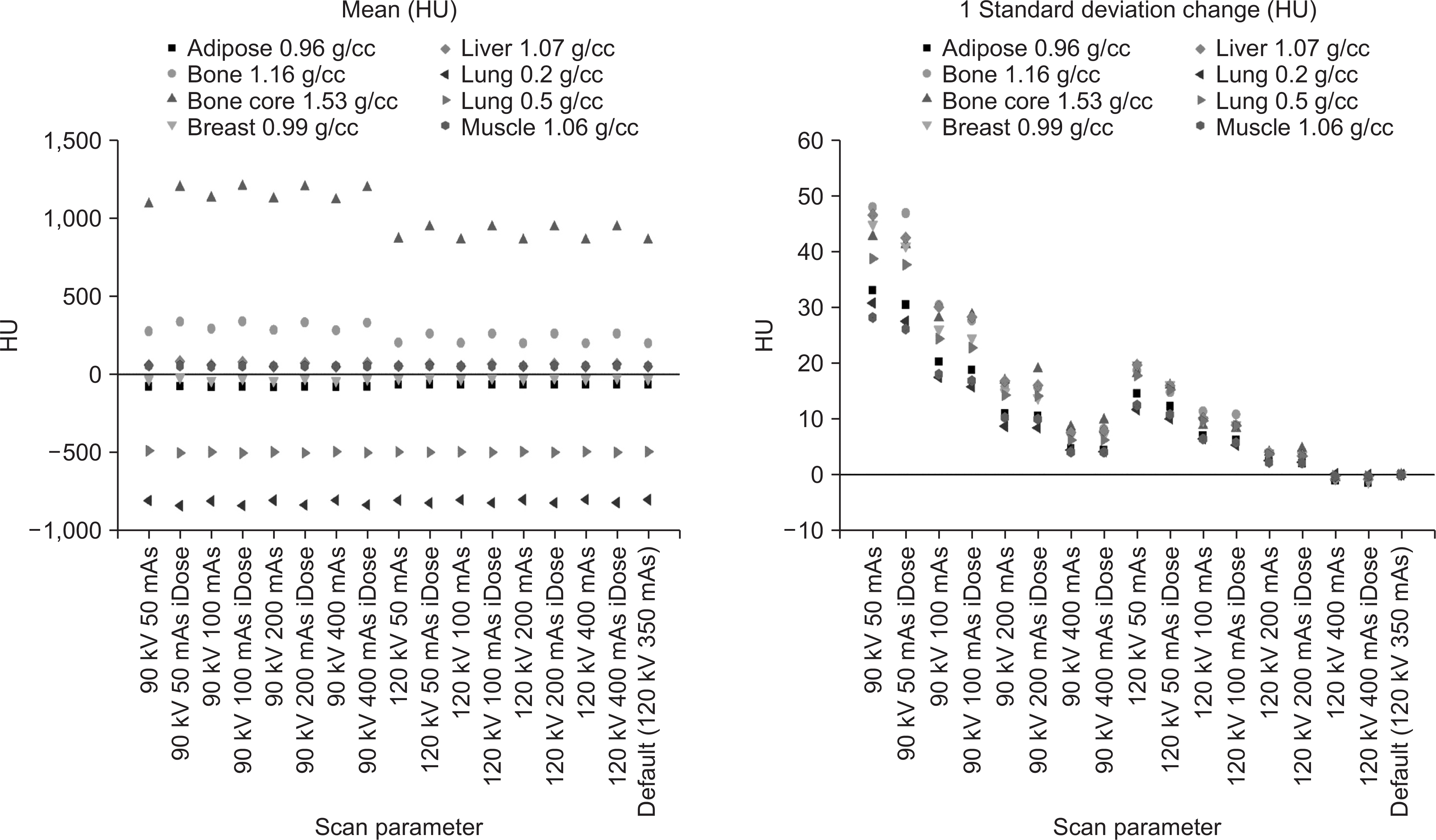
 XML Download
XML Download